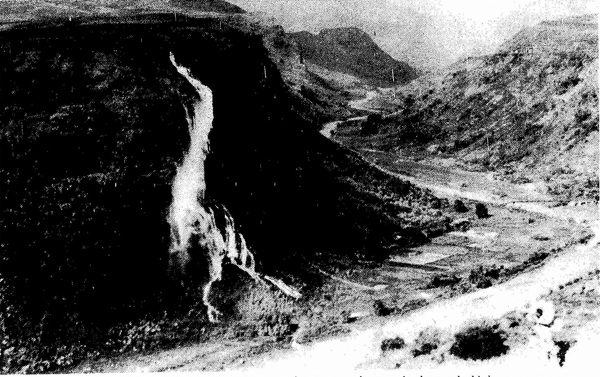In the accompanying photograph of Hanapepe Valley, taken from Hanapepe Lookout around 1900, the Hanapepe River can be seen snaking upwards through rice paddies into the highlands.
The big waterfall was created when Makaweli Sugar Plantation spilled its excess irrigation water into the valley from its mauka irrigation flumes, as was its practice in those days.
Whenever this waterfall appeared, passersby would stop their vehicles to watch it.
In the early 1900s, rice paddies extended for about three miles into the valley from those seen in the picture. They also continued down the valley toward Hanapepe town.
Twenty-three Japanese, Chinese, Korean and Hawaiian families farmed in this rice-growing region that was then called Minehaha.
The 3,000-plus bags of rice they harvested for sale annually were refined at rice mills owned by Morioka, Sakata, Mori and Achi, and then marketed.
When the heads of the rice grains formed on the rice stalks, hungry birds were attracted to them. To protect their crops from these birds, farmers would chase the birds away with noise all day long, starting early in the morning. They’d shoot guns and fix long ropes upon them, which were tied tin cans that would clang when they pulled the ropes.
The Japanese families in the valley organized and supported a Japanese language school. Giichi Nakao from the Hiroshima Prefecture, Japan, was the school’s teacher in 1913.
In 1905, a Chinese rice farmer named Lum Choy moved with his family into Hanapepe Valley to farm three leased acres located about 6 miles within the valley. The family’s home was a shack without running water or electricity.
While Lum Choy worked the paddies, his wife, Chang Shee cooked, cared for their farm animals and sewed her family’s clothes from white sugar bags or purchased cloth. With the exception of store-bought cloth, soy sauce, salt and the like, they were self-sufficient.





